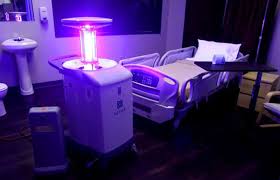
Breaking News
 IT'S OVER: Banks Tap Fed for $17 BILLION as Silver Shorts Implode
IT'S OVER: Banks Tap Fed for $17 BILLION as Silver Shorts Implode
SEMI-NEWS/SEMI-SATIRE: December 28, 2025 Edition
 China Will Close the Semiconductor Gap After EUV Lithography Breakthrough
China Will Close the Semiconductor Gap After EUV Lithography Breakthrough
 The Five Big Lies of Vaccinology
The Five Big Lies of Vaccinology
Top Tech News
 EngineAI T800: Born to Disrupt! #EngineAI #robotics #newtechnology #newproduct
EngineAI T800: Born to Disrupt! #EngineAI #robotics #newtechnology #newproduct
 This Silicon Anode Breakthrough Could Mark A Turning Point For EV Batteries [Update]
This Silicon Anode Breakthrough Could Mark A Turning Point For EV Batteries [Update]
 Travel gadget promises to dry and iron your clothes – totally hands-free
Travel gadget promises to dry and iron your clothes – totally hands-free
 Perfect Aircrete, Kitchen Ingredients.
Perfect Aircrete, Kitchen Ingredients.
 Futuristic pixel-raising display lets you feel what's onscreen
Futuristic pixel-raising display lets you feel what's onscreen
 Cutting-Edge Facility Generates Pure Water and Hydrogen Fuel from Seawater for Mere Pennies
Cutting-Edge Facility Generates Pure Water and Hydrogen Fuel from Seawater for Mere Pennies
 This tiny dev board is packed with features for ambitious makers
This tiny dev board is packed with features for ambitious makers
 Scientists Discover Gel to Regrow Tooth Enamel
Scientists Discover Gel to Regrow Tooth Enamel
 Vitamin C and Dandelion Root Killing Cancer Cells -- as Former CDC Director Calls for COVID-19...
Vitamin C and Dandelion Root Killing Cancer Cells -- as Former CDC Director Calls for COVID-19...
 Galactic Brain: US firm plans space-based data centers, power grid to challenge China
Galactic Brain: US firm plans space-based data centers, power grid to challenge China
UV light treatments found to slash hospital superbug infections by 30%

(Natural News) The emergence of drug-resistant superbugs is fast escalating into a worldwide crisis. In the U.S. alone, around 23,000 people are killed by superbugs each year, according to statistics from the U.S. Centers for Disease Control and Prevention (CDC).
In September 2016, in a speech to the UN General Assembly, the director of the World Health Organization, Dr. Margaret Chan, said, "Superbugs, resistant to nearly all currently available medicines, already haunt hospitals and intensive care units in every region of the world. Nearly all of us know someone who underwent a routine operation only to die from a hospital-acquired infection." She added the dire warning, "With few replacement products in the pipeline, the world is heading towards a post-antibiotic era in which common infections, especially those caused by gram-negative bacteria, will once again kill." [Emphasis added]
Hospitals are indeed breeding grounds for drug-resistant bacteria. A recent study by researchers from Duke Health, published in the journal The Lancet, may offer new hope, however. Researchers discovered that the addition of disinfecting ultraviolet light (UVC) to certain standard cleaning protocols can cut transmission of superbugs by as much as 30 percent.
The study, which involved 21,000 patients in nine different hospitals in the southeast, was conducted between 2012 and 2014, and focused on the four most resistant organisms: MRSA, vancomycin-resistant enterococci (VRE), C. difficile, and Acinetobacter.
Superbugs tend to linger in the hospital rooms of infected patients even after they have been discharged and their rooms disinfected, leaving future patients vulnerable.
Dr. Deverick Anderson, an infectious disease specialist and the lead investigator for the study, explained that treating these bugs is both tough and expensive, and places an immense burden on affected hospitals.
The trial made use of four different methods to clean the rooms of recently discharged patients infected with one of the four superbugs: 1) cleaning with quaternary ammonium (QA) only; 2) QA followed by UV light; 3) using chlorine bleach only; and 4) cleaning with bleach followed by UV light.
A portable device called the Tru-D SmartUVC was used to dispense the UVC light for 30 minutes in each affected room. The light bounces and reflects off various surfaces, enabling it to target hard to clean areas like open drawers or between cabinets. The UV light kills bacteria by altering its DNA.
The most effective cleaning protocol, especially in fighting MRSA, was the use of QA followed by the UV light.
Around 90 percent of hospitals involved in the study were able to maintain the protocol, even though taking an extra 30 minutes to clean a room means a loss of income for the hospital and places an additional strain on room availability. Having enough of the UVC machines also presented a challenge in some instances.
Researchers stressed that other precautions are also vitally important when it comes to preventing superbug infections, including frequent hand washing between patients and the cautious use of antibiotics. A recent article by Natural News reported, however, that nurses' scrubs and hospital bed rails are often contaminated with superbugs, too, making the problem even more difficult to control.
The overuse of antibiotics for both humans and in agriculture has also escalated the superbug problem dramatically.



